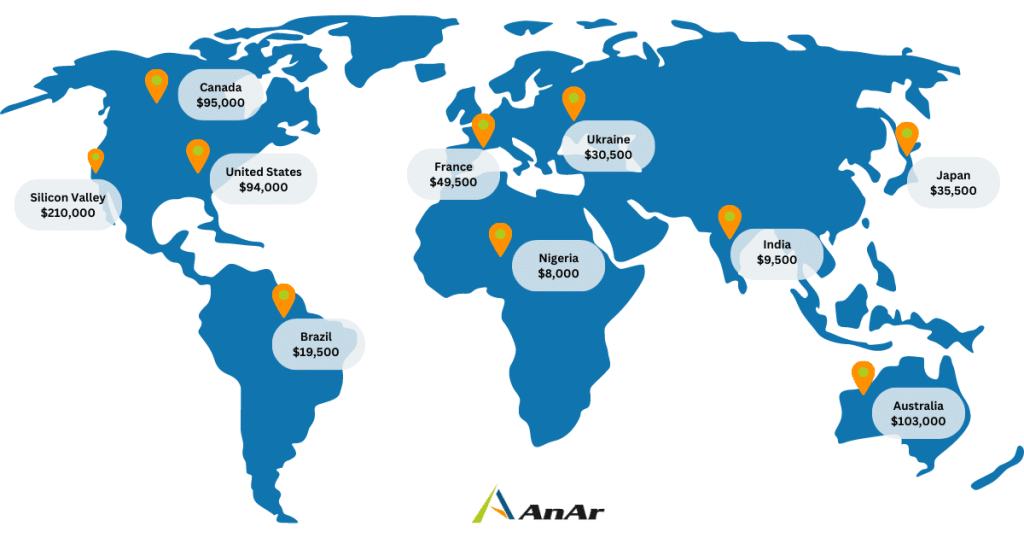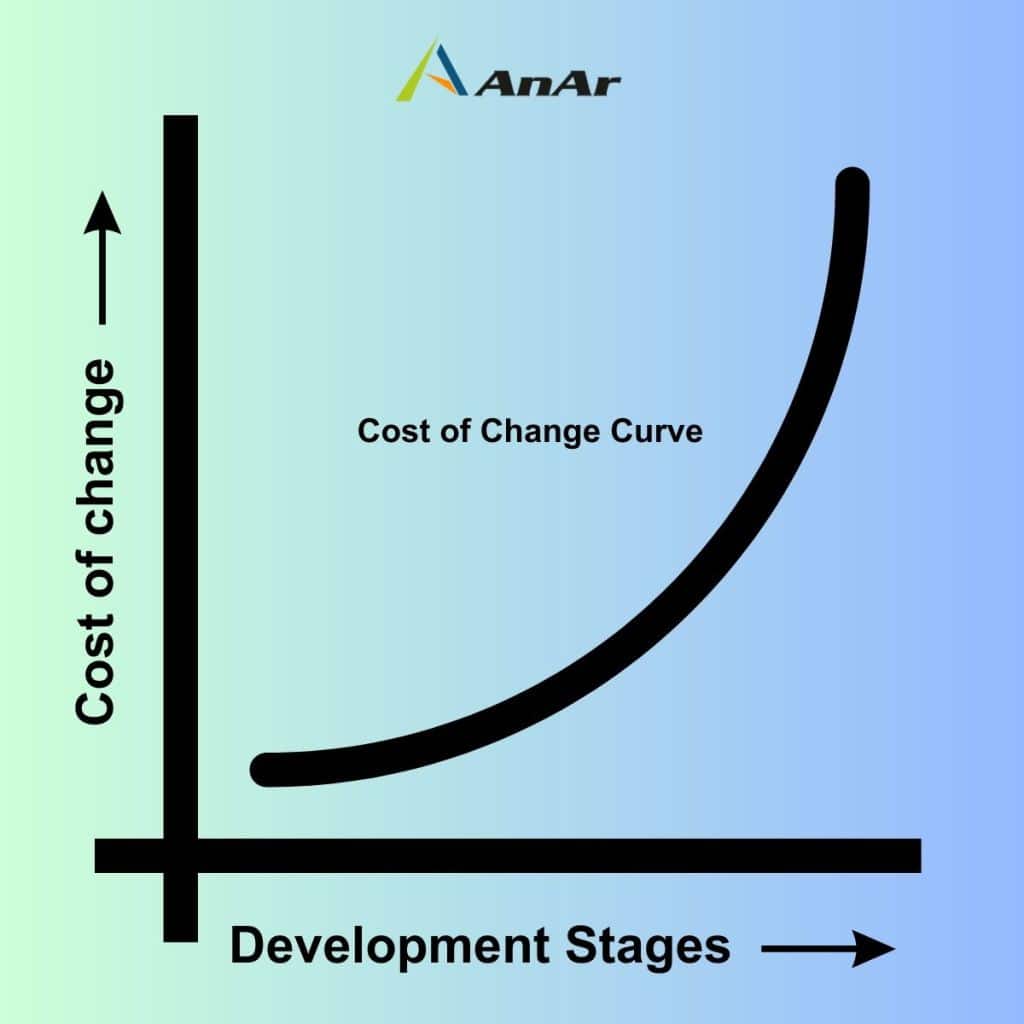Looking to optimize on software development costs? Our article unveils proven and efficient strategies to achieve just that.
Imagine you’ve just acquired a picturesque countryside cottage, and you can’t wait to turn it into your cozy forever home. With visions of warm gatherings and tranquil evenings, you set out to renovate, aiming for a stylish interior that stands the test of time.
To keep costs in check, you explore options for affordable building materials, furniture, and contractors. You’re determined to strike the perfect balance between creating a welcoming abode and staying within your budget. As the renovation nears completion, you eagerly step into your freshly transformed home. The ambiance is charming, and you can already envision the memories you’ll create in this space. However, as you start living in New Haven, you notice some telltale signs. The low-budget furniture lacks the durability you hoped for, and the inexpensive materials begin to show their limitations.
The same dilemma arises when venturing into software development. Prioritizing operational cost reduction at the expense of quality can lead to underwhelming outcomes that disappoint both you and your users. However, there’s a prudent approach that enables you to strike the perfect balance between cost-effectiveness and top-notch software development.
Top Strategies for Optimize Software Development Costs
Prior to delving into cost optimization strategies for software development, it’s essential to acknowledge that developing high-quality custom applications comes with a price tag.
Software engineers must continuously update their skills to keep pace with the fast-changing IT industry, leading to increased development costs. Additionally, hardware and software upgrades further add to expenses. While custom app development requires a substantial financial commitment, there are ways to optimize your budget.
At AnAr Solutions, we are committed to devising development roadmaps that help our clients in launching their products within their estimated budgets. In this article, we are excited to share some of these valuable insights with you.
Deciding Who will Build your Software Application
Selecting the right software development partner is a crucial decision that can significantly help in cost optimization in software development. It’s essential to carefully consider the team you collaborate with to create your application.
The choice of cooperation model is among the primary factors that will influence the development cost of your product.
Choosing an Engagement Model
When it comes to building your application or website, you have three engagement models to consider: assembling an in-house team, collaborating with freelancers, or outsourcing the development to a software company. Hiring in-house teams and outsourcing development are the preferred choices for most, as freelancers often necessitate technical expertise and may result in suboptimal software architecture.
Working with freelancers also comes with a bunch of reliability issues, such as-
- Freelancers often struggle with meeting deadlines, causing project delays.
- Communication with freelancers can be inconsistent, leading to coordination challenges.
- The quality of work from freelancers may vary, affecting project outcomes.
- Availability may be unpredictable due to their commitments to other projects.
- Freelancers occasionally disappear without warning, leaving projects unfinished.
Hiring an In-House Team-
Opting for an in-house team offers a host of advantages for your business:
- Alignment with company values: You have complete control over the recruitment process, ensuring that each team member possesses the essential hard and soft skills, shares your company’s vision and values, and is an ideal fit for their role.
- Direct communication: Being physically located promotes continuous and effortless team interaction, facilitating easy access to their support whenever needed. Informal discussions can also spark innovative ideas to improve your product, an advantage that has diminished with the rise of remote work.
- High involvement: An in-house team is fully dedicated to your project, investing all their time and efforts into its success.
Yet, there is a significant drawback to employing an in-house team: it comes at a high cost. Software engineer salaries can range from $85,000 to $110,000 annually, and in tech hubs like Silicon Valley, experienced developers may earn over $200,000 per year, making in-house software development there exceptionally expensive.
The map displays software engineer salaries, but your in-house team will likely consist of multiple developers and other professionals. For startups, this could mean employing five to ten people, resulting in significantly higher salary costs.
Outsourcing to a Company —
Outsourcing product development strikes a balance between reasonable cost and top-notch quality. Several factors contribute to the affordability of IT outsourcing compared to an in-house team:
Price flexibility: Outsourced services come with varying costs worldwide, allowing you the freedom to select your outsourcing destination. See below how hourly development rates differ in well-known software development hubs:
- USA and Canada — $150-$180 per hour
- Western and Northern Europe — $90-$120 per hour
- Easter and Central Europe — $35-$75 per hour
- South America — $20-$60 per hour
- Asia — $15-$45 per hour
Outsourcing software development to a country with lower hourly rates can minimize your costs.
Benefits of outsourcing:
- No fixed salaries: Pay only for the hours worked on your project.
- Eliminate extra expenses: No office rent, hardware, or software costs, and reduced recruitment expenses with a tailored team.
- Efficient project management: The outsourcing company takes full responsibility, freeing you to focus on other crucial business aspects.
- On-demand specialized skill availability like modern application architecture, cloud, DevOps, etc.
Outsourcing software development provides an opportunity to acquire quality services at a reasonable cost, breaking geographical boundaries to collaborate with developers worldwide.
After selecting an engagement model and determining the ideal location, the next step involves evaluating the expertise of the potential team.
Check for Relevant Experience
Seeking software cost reduction, business owners may overlook aspects not directly impacting the development budget, like the maturity of understanding industries and implementing the right technology for a business model.
Choosing a development company with experience, success, and affordability but lacking industry-specific knowledge can cause delays and added effort.
Opting for a vendor with industry-related projects provides insights and optimum methodologies for competitive product development at a lower cost. Similarly, hiring software developers with expertise in relevant technologies can accelerate the implementation process and anticipate potential challenges, leading to more efficient development.
Check for Pricing Models
When considering the expenses of application development, commercial payment models cannot be overlooked. In software development, two widely used pricing business models are fixed price and time and materials.
Fixed-price model:
- Defines the project’s cost, scope, and timelines upfront.
- Limited flexibility to change the development strategy or scope after approval.
- This might lead to launching an unwanted product as early user feedback has not been incorporated leading to expensive adjustments later.
- Not able to change priorities as per changing market dynamics.
Time and Material Model:
- Offers flexibility to adapt to market changes.
- Allows changing feature priorities based on user feedback.
- Aligns well with the lean startup approach for cost optimization.
- Enables budget allocation by agreeing on the development team’s monthly time commitment.
- Charges on a monthly basis, aiding in development expense planning.
Meticulous Application Architecture and Project Planning
A meticulously designed application architecture during the initial development saves time, money, and effort. It ensures high quality, performance, and scalability, avoiding costly challenges later on. Skipping architectural planning can lead to challenges affecting feature implementation, app performance, and scalability.
Eventually, rebuilding the app becomes necessary, consuming more time, money, and effort. Moreover, it is vital to acknowledge that the cost of change is inversely proportional to the development stages. Introducing changes in the earlier stages of the product development lifecycle incurs lower costs, as modifications can be seamlessly integrated. However, as the development progresses, the cost of change escalates substantially.
Adopting Automation
Adopting automation revolutionizes software development, enabling seamless collaboration with CI and CD. CI facilitates frequent code integration for rapid feedback and bug detection, while CD automates the release process, reducing errors. By implementing CI/CD pipelines in conjunction with DevOps practices, businesses can achieve a well-orchestrated software delivery process.
Furthermore, automation extends beyond CI/CD and DevOps. Automated testing (unit, integration, and end-to-end) validates software functionality in each development stage, improving overall quality. This leads to faster, more reliable releases, satisfying customers with timely updates and features. Infrastructure as Code (IaC) ensures consistent and reproducible deployment, managing infrastructure through code.
Combine Design Thinking, Lean and Agile Methodologies
In today’s dynamic and competitive market, organizations need an integrated approach to software development that promotes innovation, efficiency, and customer-centricity. Design Thinking, Lean, and Agile are three powerful methodologies that, when combined, create a powerful trifecta for software development. Design Thinking lays the foundation for understanding user needs and creating innovative solutions. Lean methodology ensures that development efforts are efficient and focused on value delivery, reducing waste, and avoiding unnecessary features. Agile, on the other hand, is an iterative and incremental development approach that enables flexibility and adaptability. It promotes collaboration between cross-functional teams, breaking down projects into manageable iterations, or sprints, allowing for frequent feedback and adaptation.
Ensure that your team adheres to the finest development practices!
Regardless of the country, engagement model, or industry, it is essential for your tech team to adhere to software development best practices along with appropriate tools and technologies to optimize development costs.
Conclusion
Developing an application may be costly, but there are avenues to achieve reasonable expenses and efforts. Partnering with an experienced engineering team that adheres to best practices enables you to optimize software development costs while maintaining top-notch quality.
Book a Meeting With AnAr










